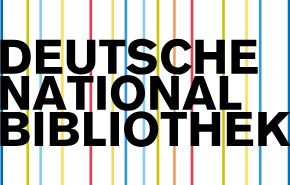MAIN PROBLEMS AND MODERN TRENDS IN TODAY’S LINGUISTIC SPHERE
Abstract
This paper explores the integral role of comparative linguistics in translation studies, emphasizing how linguistic comparisons between source and target languages help address issues of equivalence and translation accuracy. By analyzing cross-linguistic structures, semantics, and cultural contexts, comparative linguistics offers critical insights that aid translators in producing faithful and meaningful translations. It also investigates problems such as non-equivalence, lexical gaps, syntactic divergence, idiomatic and cultural expressions, and how these issues can be addressed using comparative linguistic principles. The discussion includes examples from English and other typologically diverse languages such as Russian, Uzbek, French, and Japanese. Ultimately, the study advocates for a stronger integration of comparative linguistic knowledge in translator training and practice.
Keywords
comparative linguistics, translation studies, equivalence, non-equivalence, contrastive analysis, linguistic typology, translation theory.How to Cite
References
1. Khamrakulova, S. A. B. I. N. A., & Zokirov, M. T. (2022). Phraseological units expressing old age of a human being in the English and Russian languages. ISJ Theoretical & Applied Science, 1(105), 280-283.
2. Khamrakulova, S. (2024). COMPARISON OF PHRASEOLOGICAL UNITS DENOTING ADOLESCENCE AND YOUTH IN THE UZBEK AND RUSSIAN LANGUAGES. Theoretical aspects in the formation of pedagogical sciences, 3(6), 86-90.
3. Khamrakulova, S. F. (2024). COMPARATIVE ANALYSIS OF PHRASEOLOGICAL UNITS. EXPRESSING ELDERLY AGE THROUGH IDIOMATIC EXPRESSIONS IN THE ENGLISH AND RUSSIAN LANGUAGES. «MODERN PHILOLOGICAL PARADIGMS: INTERACTION OF TRADITIONS AND INNOVATIONS, 4(25.04), 871-874.
4. Khamrakulova, S. F. (2024). PHRASEOLOGICAL UNITS DENOTING HUMAN AGE IN ENGLISH, UZBEK AND RUSSIAN LANGUAGES. Bulletin of Science and Education, (6 (149)-1), 40-44.
5. Feyruzkhanovna, K. S. (2024). EXPRESSING ELDERLY AGE THROUGH IDIOMATIC EXPRESSIONS IN THE ENGLISH AND RUSSIAN LANGUAGES. Western European Journal of Linguistics and Education, 2(11), 144-147.

This work is licensed under a Creative Commons Attribution 4.0 International License.
Authors retain the copyright of their manuscripts, and all Open Access articles are disseminated under the terms of the Creative Commons Attribution License 4.0 (CC-BY), which licenses unrestricted use, distribution, and reproduction in any medium, provided that the original work is appropriately cited. The use of general descriptive names, trade names, trademarks, and so forth in this publication, even if not specifically identified, does not imply that these names are not protected by the relevant laws and regulations.





